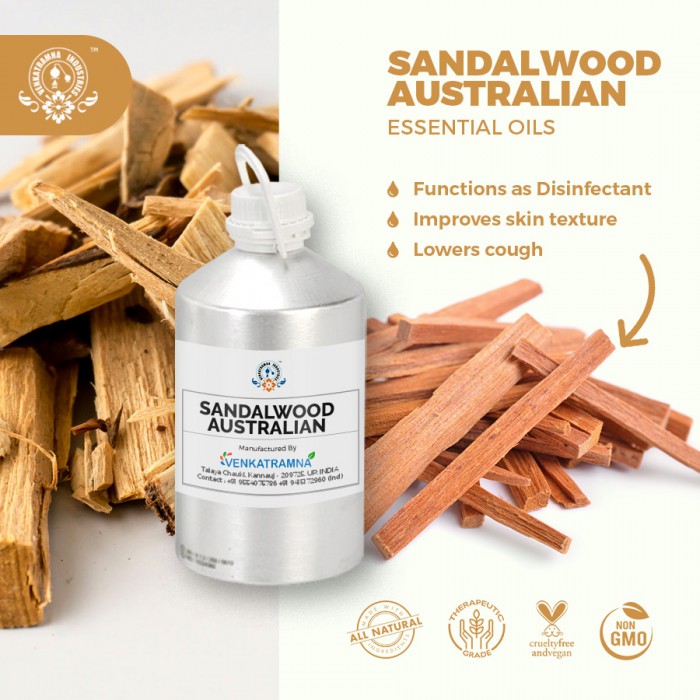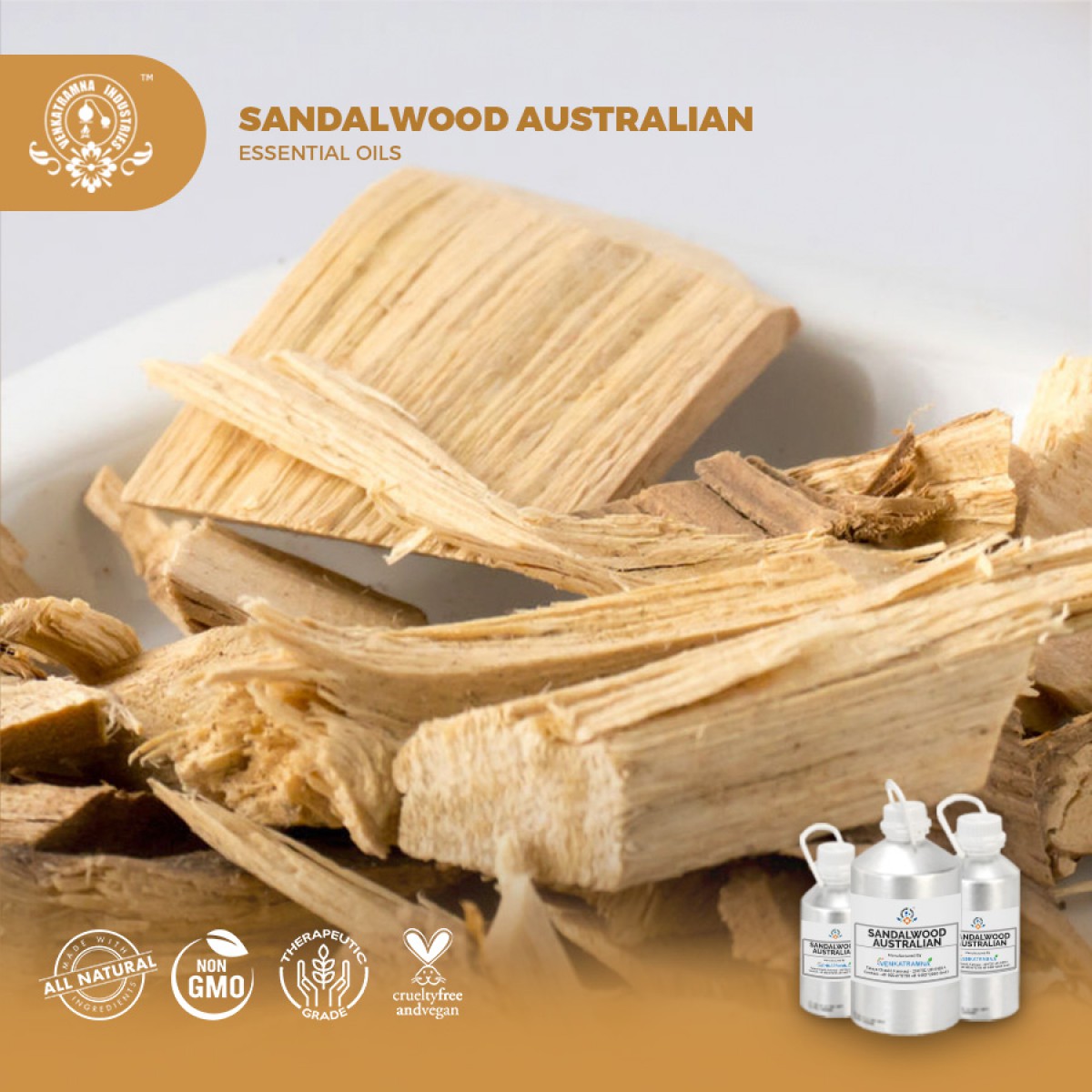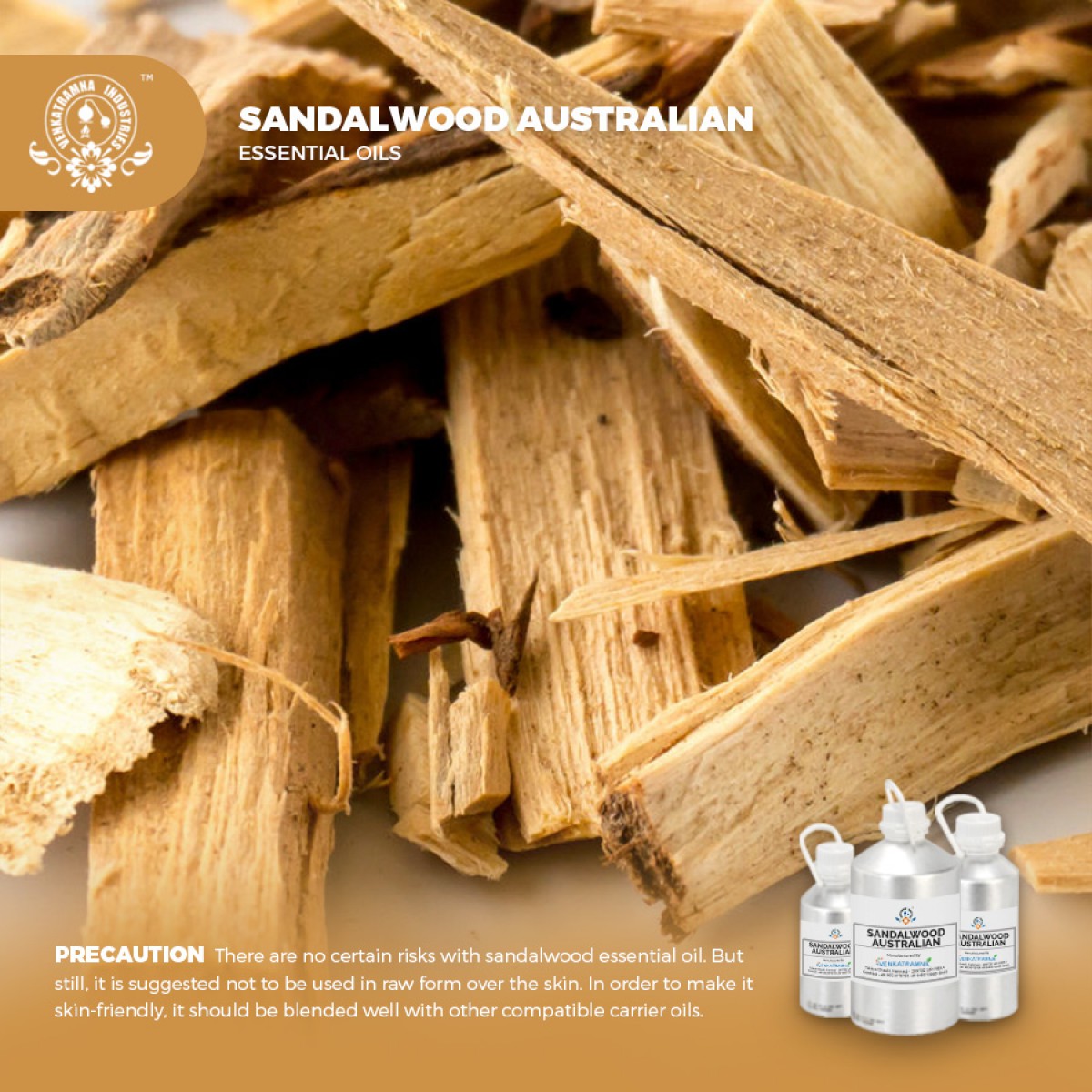Botanical Name: Santalum spicatum Common name: Sandalwood Plant fa Read More
|
Botanical Name: |
Santalum spicatum |
|
Common name: |
Sandalwood |
|
Plant
family: |
Santalaceae |
|
Genus: |
Santalum |
|
Appearance/Color: |
A medium, clear, pale yellow to golden liquid. |
|
Odor: |
Woody and earthy aroma |
|
Blends With: |
Black Pepper, Geranium, Bergamot, Rose, Myrrh, Bergamot,
Vetiver and Ylang-Ylang. |
|
Origin: |
Australia |
|
Source: |
Wood |
|
Method
of Extraction: |
Steam Distillation |
Sandalwood oil, distilled from
the heart wood and roots of the sandalwood tree, is one of the most valuable
essential oils, valued by perfumers for its woody notes, providing a deep rich
base note to perfumes and acting as a natural fixative. In addition to acting
as a feed stock to produce the essential oil, the wood is also valued for
carving, and furniture making. Rising demand and very high prices for both wood
and essential oil, a slow growing tree which takes 30 to 60 years to give a
crop.
Sandalwood oils come from a range
of species, and while they all have similar uses, quality and characteristics
vary between the oils of the different species. The key species used for
distillation of essential oils are listed below, with East Indian Sandalwood oil
and Australian Sandalwood oil dominating supplies to the market:
·
East Indian Sandalwood oil (Santalum album).
The most well-known and oldest traded type of sandalwood, in use for thousands
of years. Cultivation centered in India (it is native to the highlands of
southern India and the Malayan Archipelago) with the center of production in
India in Mysore. Its natural distribution extends down to Indonesia
(particularly Timor), and it has been introduced into Australia and plantations
established in the tropical northwestern areas – an estimated 8,000 ha with
annual additions of around 1,000 ha; more recently it has also been introduced
into a number of the S Pacific Islands and plantations established (Fiji,
Tonga, Vanuatu, New Caledonia);
·
Australian Sandalwood oil (Santalum spicatum,
syn. Eucarya spicata). (Also referred to as West Australian Sandalwood oil).
Native to the desert-like areas of SW Australia, close to Perth. Substantial
plantations have also now been established – around 15,000 ha with annual additions
of 1-2,000 ha. A second sandalwood species, S. lanceolatum, is also found in
Australia, principally in Queensland, NSW, and northwestern part of Western
Australia, but is little used commercially.
·
Santalum paniculatum. Only found in
Hawaii. Around 7,000 ha reported to be under sustainable management. Commercial
oil now coming onto the market.
·
Santalum yasi. Found in Fiji, Samoa and Tonga.
Traditionally included in mixed cropping agroforestry cultivation systems. The
species hybridizes readily with S. album resulting in variable quality of oil
depending on the source trees.
· Santalum austrocaledonicum. Found in Indonesia, Papua New Guinea, New Caledonia.
DISCLAIMER
The complete range of conditions
or methods of use are beyond our control therefore we do not assume any
responsibility and expressly disclaim any liability for any use of this
product. Information contained herein is believed to be true and accurate however,
all statements or suggestions are made without warranty, expressed or implied,
regarding accuracy of the information, the hazards connected with the use of
the material or the results to be obtained from the use thereof. Compliance
with all applicable federal, state, and local laws and local regulations
remains the responsibility of the user.
The FDA has not evaluated the
statements on this website. No claims are made by Venkatramna Industries as to
the medicinal value of any products from vriaroma.com or by us. The information
presented here is for educating our customers about the traditional uses of
essential oils and is not intended to diagnose, treat, cure, or prevent any
disease. You are responsible for understanding the safe application of these products.
If you have any questions, please call or email us for further information.
As per NAHA guidelines, New Directions Aromatics
(NDA) does not recommend the ingestion of essential oils. It is imperative to
consult a medical practitioner before using Essential Oils for therapeutic
purposes. Pregnant and nursing women and those taking prescription drugs are
especially advised not to use this product without the medical advice of a
physician. The oil should always be stored in an area that is inaccessible to
children, especially those under the age of 7.
Sandalwood is a tree which is
widely cultivated for its fragrant essential oil. More than the pleasing scent
it gives, sandalwood oil is also said to bring benefits not just to our body
but to our general well-being as well.
Sandalwood oil is one of the
most important essential oils in the world. It offers multiple uses including
perfumes and cologne, medicine, soaps, skin care products, and incense.
Sandalwood oil is also popular in aromatherapy where it is reputed to bring
relaxation and alertness in the mind.
The oil has great application in
perfumery and cosmetics. The oil is also used in making agarbatti’s for
incense. No other wood is most closely tied to religion and spirituality than
sandalwood. Apart from its spiritual and historical significance, sandalwood is
also known for its extreme usefulness. Whether you use it for aromatherapy, for
perfumery, for skin care, for treating illnesses or for incense.
COMMON
USAGE
·
Cosmetics
·
Perfumery
·
Soap Industry
·
Incense (Agarbatti’s)
·
Sedative
·
Antiseptic
Ingredients:
|
S. No |
Key Constituents |
Strength (%) |
|
1 |
(S)-(Z)-lanceol |
18.0 |
|
2 |
Epi-cyclosantalal |
5.9 |
|
3 |
lanceoloxide |
3.9 |
|
4 |
2, (7Z,10Z)-bisabolatrien-13-ol |
5.6 |
|
5 |
(-)-epi-a-bisabolol |
5.1 |
|
6 |
Cyclosantalal |
2.6 |
|
7 |
b-bisabolene |
3.7 |
Safety Summary
·
Hazards: Not Known
Organ Specific Effects
·
Acute toxicity: No Data Available
·
Skin corrosion/irritation: May be
irritating to skin.
·
Serious eye damage/irritation: No Data
available.
·
Germ cell mutagenicity: Not specified
·
Carcinogenicity: No Data Available.
·
Reproductive toxicity: Not specified
·
STOT-single exposure: Not specified
·
STOT-related exposure: Not specified
·
Aspiration hazard: Not specified
·
Information on the likely routes of exposure:
Skin/scalp contact.
·
Symptoms related to the physical, chemical,
and toxicological characteristics: None known. Irritation of the eye if
exposed: Redness of the skin if irritated.
·
Toxicity
o
Acute fish toxicity: LC50 / 96 HOUR – No data
available
o
Toxicity to aquatic plants – No data available
o
Toxicity to microorganisms – No data available
o
Toxicity threshold – No data available
·
Persistence and degradability:
Biodegradation is expected
·
Bio-accumulative potential:
Bioaccumulation is unlikely
·
Mobility in soil: Unknown
Avoid exposure to marine environments and waterways





 MSDS-Sandalwood1.pdf
MSDS-Sandalwood1.pdf




